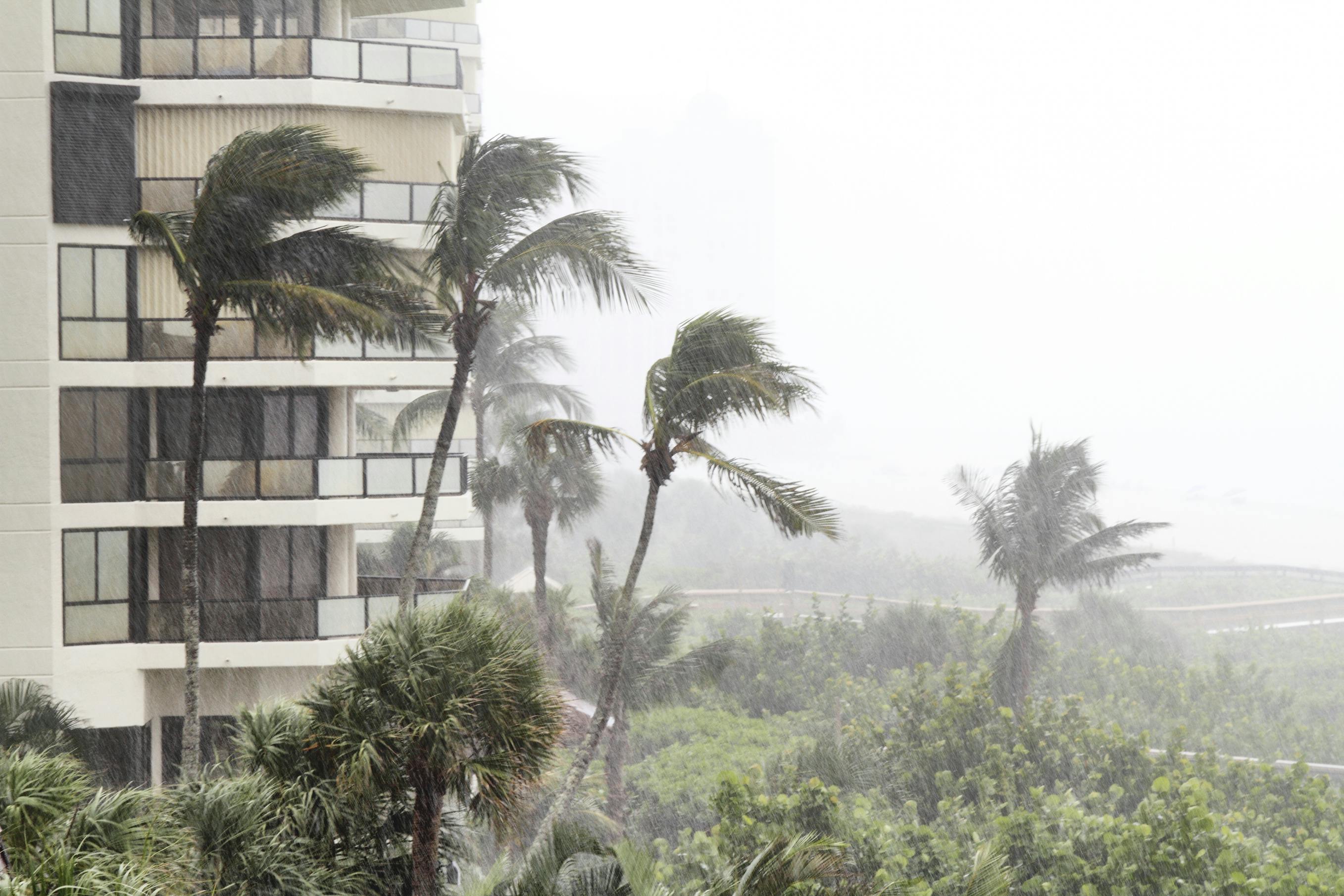
Hurricane season in the Northern Hemisphere goes from June to November, although severe storms are possible at other times of the year. There's actually a bit of good news for those who live near the Atlantic and Gulf of Mexico accompanying this year's hurricane season. Meteorologists are forecasting a strong El Nino effect through 2016, meaning that the East Coast and Gulf of Mexico will likely experience more rain than usual and the edge should be taken off of hurricane season for the Atlantic and Gulf coasts through next summer.
That said, hurricanes and tropical storms can strike coastal locations at any time of the year. Even coastal communities as far north as Massachusetts and Connecticut learned to respect the power of tropical cyclones a few years ago courtesy of Hurricane Sandy.
That disaster hit landlords particularly hard, because while Floridians and Texans know from experience to get windstorm coverage added to their insurance policies, many homeowners and landlords in the parts of New Jersey, New York, Connecticut, and Massachusetts devastated by Hurricane Sandy found themselves with insurance policies that did not adequately protect them from windstorm and storm damage.
Standard Insurance Policies Don't Cover Hurricane or Windstorm Damage
Not every home is at equal risk of hurricane or windstorm damage. In this regard, hurricane and windstorm insurance is like earthquake insurance, where it costs extra to cover properties built on or near fault lines. The same is true with hurricane and windstorm insurance. For example, Texans living on the tempestuous Gulf Coast must pay more to completely insure their homes than those living in the comparatively placid scrublands of West Texas.
To ensure you are protected against the devastations of hurricanes and windstorms, you have to secure additional coverage, either with a separate policy or a rider, to your existing homeowners or landlord insurance policy.
Hurricane Insurance Deductibles: Not Like Ordinary Deductibles
Deductibles are usually defined by specific dollar amounts. The deductible associated with wrecking your car might be a flat $1,000, for example, and your losses in the event of a collision will be limited to that amount.
Hurricane insurance is different. Instead of a flat rate, hurricane insurance policies now routinely define deductibles in terms of a percentage of the loss. In most cases, this exposes property owners to significantly higher out of pocket costs than they might encounter for the other hazards they are insured against.
The technical term for these deductibles is "hurricane and named storm" deductibles, and they vary from 1-10 percent of losses due to named storms (e.g., Hurricane Sandy).
According to the National Association of Insurance Commissioners, 19 states have authorized or adopted hurricane and named storm deductibles in some fashion. These states include the following:
- Alabama
- Connecticut
- Delaware
- Florida
- Georgia
- Hawaii
- Louisiana
- Maine
- Maryland
- Massachusetts
- Mississippi
- New Jersey
- New York
- North Carolina
- Pennsylvania
- Rhode Island
- South Carolina
- Texas
- Virginia
- District of Columbia.
Here's an example of how hurricane and named storm deductibles work in Louisiana: State Farm recently imposed a mandatory 5% hurricane deductible on all their homeowners insurance customers in the state. In the event a named storm damages or destroys a $200,000 home, the property owner will have to pay the first $10,000 in costs out of pocket before any coverage kicks in. Under this policy, Louisiana property owners bear 150% more risk, on average, than they did in 2013.
Are You Covered for Wind Damage?
Most homes nationwide are covered for wind damage under their homeowners or landlord insurance policies. But policies issued in coastal areas in hurricane-prone states like Florida or Texas often specifically exclude wind damage. Additional coverage for wind damage must be obtained via a rider, a separate policy or from the state insurance program.
Here are two examples of these exceptions:
- Florida law requires insurers to include wind coverage in the event of named storms, although not in the event of an unnamed storm system.
- Louisiana homeowners insurance policies don't cover floods, but they do cover windstorm damage if the house isn't located near coastal areas. As you approach the ocean, insurance companies are likely to exclude wind damage from their standard policies. Specialized hurricane and windstorm coverage must be added to homeowners and landlord insurance policies there.
What Type of Insurance Covers Wind-Driven Rain?
If wind blows rain into your house and the rain causes damage, it won't be covered under flood insurance. The National Flood Insurance Program categorizes that type of incident as wind damage.
As we discussed above, your homeowners insurance may cover wind damage, but probably won't if you live near the ocean and have a standard policy. Look carefully at your policy, especially if your property is located in a coastal area.
Be Prepared: Make Sure You're Covered
It's a good idea to think through possible causes of damage to your property. For example, if your home is at risk of being damaged by a flash flood caused by severe rains or a river or lake jumping its banks, you need to know that your homeowners insurance policy likely won't cover the cost of repairs. Flood damage is excluded under standard homeowners and renters insurance policies. You would need flood insurance, which is almost always obtained from the National Flood Insurance Program, to protect you from that hazard.
